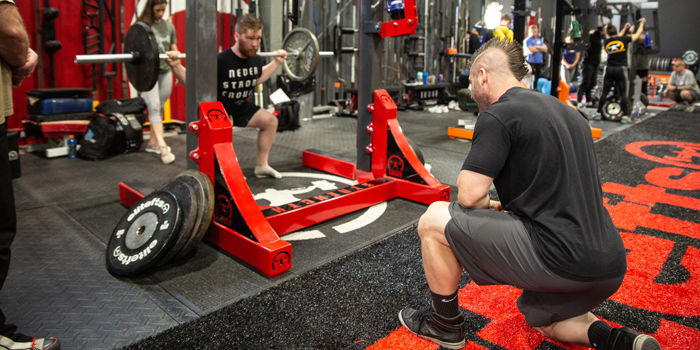
Note: Everything presented in this is my opinion and mine alone — well, some of you may agree with it, and some of you won’t.
I’ve decided to put out a series of my thoughts, questions, comments, and concerns I personally see in the performance world. The point here is to create discussion, and well, stirring the pot seems to be something I’m good at. elitefts’ own Todd Hamer has told me I do a good job of being a heretic of the profession.
I’m simply curious and continuously asking why as I think it’s one of the best ways to get better. I’m trying to understand things better so I can make the field better. I’ll admit, it doesn’t always come off this way; honestly, though, I’m trying to create better dialogue for all of us.
RECENT: 9 Things I Learned From a Social Media Detox
The main reasons I’m stirring the pot is because of traditionalists and dogma. Mainly those who say, “That's the way we’ve always done it.”
Forget your traditions and the way you’ve always done it. It’s dangerous to continue doing what you’ve always done and continuing to do what those before you have always done without questioning why you’re doing it.
You, as a coach, need to learn, adapt, evolve, and grow. If you’re not growing and getting better, you’re dying. I don’t care what you’ve always done; get better as a coach. You owe it to your athletes and clients.
Everyone is entitled to their opinion; it’s yours. This is the beauty of having one. Don’t attack someone else and say their opinion is wrong because they have a different train of thought from yours. This doesn’t mean they are wrong or you are right. Attempt to understand the context and perspective the person who has a differing opinion than you. You never know, you might learn something.
I know not everybody will agree with. I don’t want everybody to agree with me. I want people to question me and push me, as this is how I get better.
Understand that hard questions lead to hard discussions, and hard discussions lead to hard answers, and hard answers are what we need more of in our industry.
Question everything. Ask why. Seek knowledge against all nonsense.
We need more coaches to question things and not just take “what we’ve always done” at face value.
Now, on to the pot stirring...
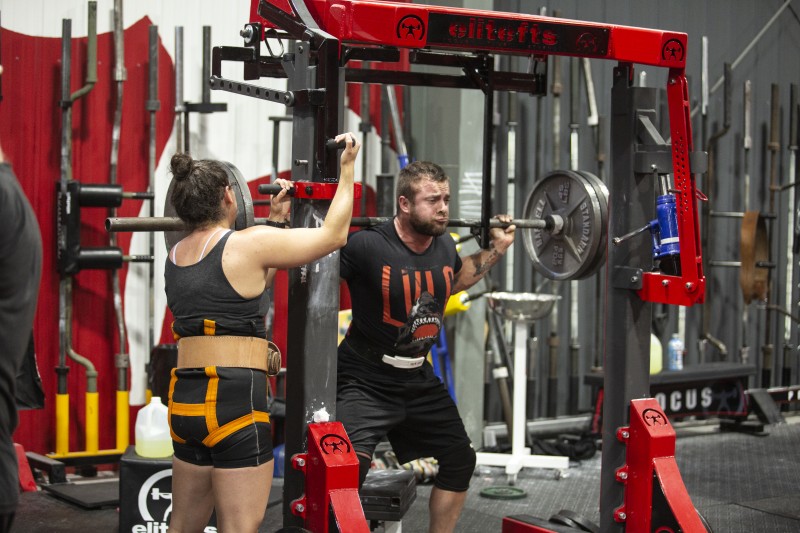
Box Squats Aren’t Just For Powerlifters
Squatting to a box is not a box squat (they are, in fact, two different movements).
Please repeat the above a few more times.
The box squat is something I’ve discussed at length with teammates Nate Harvey and Jason Brown and will continue to fight for in the performance world.
I still see so many coaches out there bashing the box squat yet not truly understanding the movement. One of the more prominent voices in strength and conditioning recently posted about the box squat being a “bad exercise” and continued to go on saying they don’t see the value in the spine between two immovable objects and you only need one wrong rep. I understand what this coach is trying to say.
Doing one wrong rep with any exercise doesn’t mean you shouldn’t do it. I have no issue if you decide not to use the box squat; that's your choice. I do have a problem when a high-profile coach who has over 60,000 followers on Instagram makes blanket statements about a movement they don’t seem to understand. This is reckless and dangerous, as others look up to this coach and what they say as truth.
The coach who made this statement proceeded to say you wouldn’t put your hand under 500 pounds, so why would you put your spine under it?
Is this really a similar comparison? I’ll let you decide.
Now, I do respect this coach and what they’ve done for the industry, but just because I respect them doesn’t mean I agree with them. I give this coach credit for what they’ve built, as they see a lot of athletes every year, so they have had to develop a program to fit their needs. They get results, but just because you get results doesn’t mean you get to tell everybody else an exercise they use to get their athletes results is wrong, especially when research shows how beneficial it is to put a bar on your back and squat.
Studies show the box squat puts less stress on the lower back, knees, ankles, and produces a higher rate of force development by almost three to four times than other squat variations. I see plenty of value in using this movement.
Wouldn’t it also be great to improve first-step quickness? Well, when you pause on the box and need to overcome gravity/static position, you engage the glutes and hamstrings to get into hip and knee extension. Huh, I wonder when an athlete would need to do this?
A lot of coaches say box squats are for powerlifters, and they aren’t training powerlifters — they are training athletes.
So why do your athletes have to squat to or past parallel? Powerlifting is the only sport where this is actually needed.
We are coaching athletes, not powerlifters.
Right?
Study: A biomechanical comparison of the traditional squat, powerlifting squat, and box squat.
There’s a lot of bad information out there. If you want to know how to coach the box squat correctly, there are plenty of articles on this site.
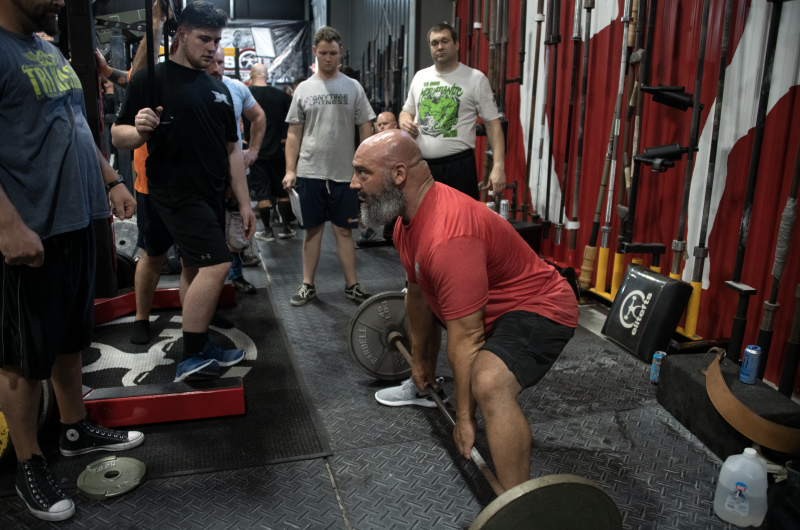
Sumo Deadlifts are Awesome for Athletes
I’m not sure why coaches hate this movement so much. Maybe they just don’t understand it. It seems a lot of us forget sports are played in multiple planes. Just watch an athlete make a cut, a pitcher throw, a batter bat, a tennis player move side to side, and then watch an athlete pull in a wide sumo stance. Looks pretty similar, doesn’t it (I didn’t provide any images because of rules and regulations and copyright, so use Google)?
The sumo deadlift is one of the best movements at improving lateral force production. And based on my examples above, lateral movement is integral to just about every court- and field-based sport.
Want to know what the best exercises are for your athletes? Ones that are less complex than what they see in sports but require force production in the same directions of the sports movement. The sumo deadlift fits this description. Seriously, what movements engage the hips (glutes and hamstrings), groin (adductors), the quads, and the abdomen like the sumo deadlift and the box squat do?
WATCH: What I'm Seeing and Why It's Wrong: Fixing the Sumo Deadlift
Add box squats and sumo deadlifts to your program and take out the agility drills and watch your athletes’ agility times get better across the board. If they don’t, I’ll give you your money back guaranteed.
There will always be disagreements and differences of opinions. I don’t foresee everybody embracing the box squat and sumo deadlift, and just because you decide not to use them doesn’t mean they don’t work. They are tools, and just like any other tool, you need to know how to use it. You wouldn’t use a screwdriver to cut down a tree. Just like you wouldn’t use your hand to box squat 500 pounds.
The biggest takeaway I want is for coaches to not demonize exercises without understanding the context in which they are used. Just because you don’t use an exercise doesn’t mean it’s a bad exercise. I don’t care what exercises you use as long as you do no harm and get results.
There are no bad exercises. There are bad coaches who don’t understand exercises.
I’ve used the box squat and sumo deadlift for over 10 years with my clients, my athletes, and me, and have had no injury I can recall from utilizing those movements. Personally, I’ve gotten hurt and seen more injuries from free squats and conventional deadlifts. That doesn’t mean I’ll sit here and say they are bad movements and you shouldn’t do them.
This is for you to decide what is best.
Do not do a movement if you can’t personally perform it, you can’t coach it properly, or you don’t understand it.
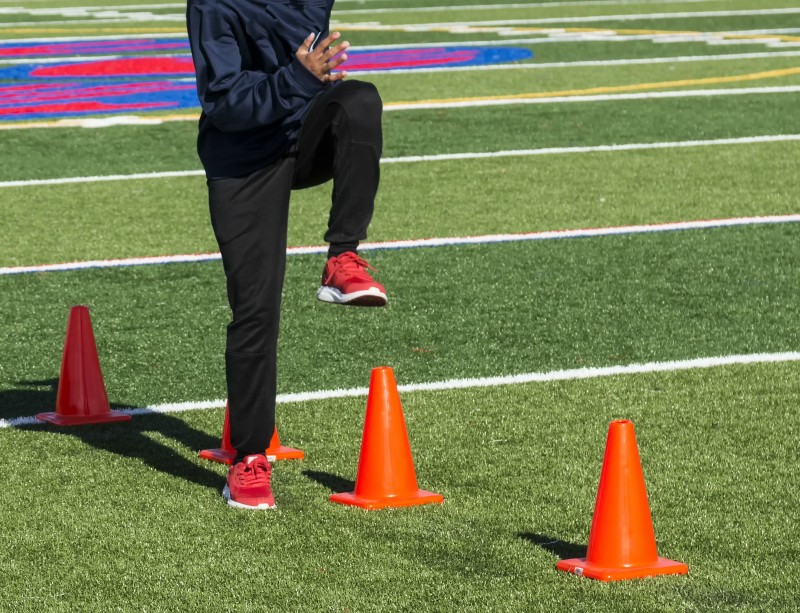
David Wood © 123rf.com
Closed Change of Direction Drills
I love speed and agility drills. I had so many different cone drills it was crazy. I’d run through them as fast as I could to show the athletes the old man still has it. Over the past couple of years, I’ve been coming to terms with my love for cones drills while acknowledging that, though well-intentioned, cone drills don’t have a lot of carryover into sports. I came to the realization through all my film analysis, I can copy the look, but I didn’t truly understand the function.
Verkhoshansky stated in Supertraining: “Sport is a problem-solving activity where movements are used to produce the necessary solutions.” This means sports are problems and athletes are problem solvers. Our goal, then, should be to design a learning environment that aims to enhance movement problem-solving.
Motor learning and skill acquisition and their uses in sports performance is a deep rabbit hole not a lot of coaches go down. I encourage all coaches to have some type of familiarity with it. Some concepts to get you started are: ecological dynamics, ecological psychology, constraints lead approach, contextual interference, skill acquisition, and motor control.
RELATED: Key Components of a Youth Athlete's Initial Training Program
Understand your athletes perceive in order to move, but they must also move in order to perceive. Closed drills lack perception; in other words, they don’t train the brain. Everything changes when perception needs to be used and problems need to be solved.
I honestly don’t think enough of us give the human body and brain credit. It’s smarter than any of us can comprehend. Sports are complex problem-solving. Let your athletes self-organize and figure things out. Trust me, the human brain knows more about what mechanics and power the body is capable of producing better than any of us.
How often do you allow your athletes to figure things out for themselves when it comes to movement and how often are you actually coaching them? Try coaching less and instead, give your athletes scenarios where they need to find more solutions on their own. Let me know how it goes.
Stop Watching Exercise Videos
This ties into my last point. I’ve attempted to instill in other coaches they should watch more sports videos than exercise videos. I’ve always spent a lot of time watching and analyzing sports videos and highlight reels of the greatest athletes. The reason I did this was because I felt it was the only way I could truly understand movement.
Without knowing the ins and outs of a sports skill or movement, how could I create a training program with exercises to maximize skill? We need to seek to understand the function of the movement we are trying to improve. Something many coaches say to me is, “Well, we can’t copy what Barry Sanders does. He has a gift, but he’s an outlier. He has mastery of skill.”
This doesn’t make sense. He’s exactly who we want to be studying, understanding, and copying in order to produce better athletes. Want to understand how the best athletes do what they do? Watch what the best athletes do and how they do it. Too many of you are obsessed with exercises.
It would greatly benefit you and your athletes if you became a little more obsessed with the dynamics of movement. Then, once you truly know sports skills, you will then understand the exercises you’re using to improve said skill.
This goes back to what I was saying in regard to the box squat and sumo deadlift. It’s more important to know the sports skill you are trying to improve than just going to an exercise first. Which is why you need to understand the sport you are programming for.
Our goal as performance coaches is to enhance athleticism — not their lifts.
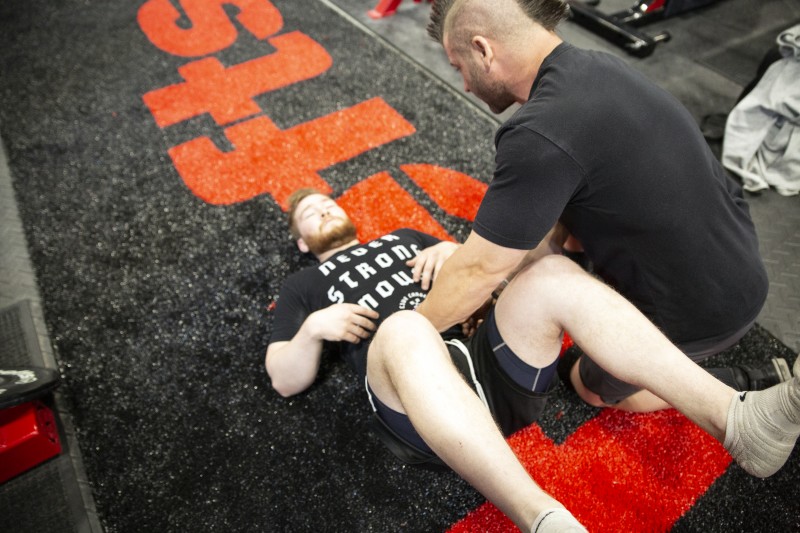
Easy On the Mobility Drills
Your athletes don’t need more mobility drills. I see a lot of coaches on social media asking for mobility warm-ups for their young athletes. Some coaches even spend 30 minutes prior to warming up on mobility.
My thought with mobility is many coaches seek to create a higher range of motion in joints but do nothing after this range of motion is created. While this might be the right intention, it may be the wrong execution.
READ MORE: 3 Things Physical Therapy School Taught Me About Being A Strength Coach
What I mean is I don’t see many coaches strengthening this newfound range of motion. I think we would all agree mobility is important. Are having your athletes roll on a foam roller and doing some stretches really doing anything?
Remember, mobility is the amount of active usable motion a joint possesses. While you might have great hip mobility, is it actually usable? What I’m getting at is you need to strengthen the range of motion also. Just because your athletes are great with a 90-90 stretch doesn’t mean they are actually strong in this range, which is why you should also be loading it.
Some of the best mobility drills involve weights. Think about it: How many athletes take their mobility work seriously? Most just go through the motions. It’s a waste of time. When you put some weight in their hands, their intent seems to change. Weights equate to strength training for most of them.
Your athletes’ hips are tight most likely because they are weak. There are many times where a joint is tight as a protective mechanism as to tell the body, “Hey, we aren’t strong enough in this position, and it’s probably not a good idea to go there as this is when injury may occur.”
Invest in movements like front squats, lateral lunges, Cossack Squats, Jefferson Curls, kettlebell halos, Turkish Get-Ups, to name a few. Do those movements, and you won’t need to do much mobility work.
Closing
I’d love to hear your thoughts as long as it’s done in a civil manner. Let’s have an intelligent discussion over the topics presented in this article in order to move the field forward. Saying I’m wrong or my opinion doesn’t matter is a waste of your time and doesn’t do anybody any good.
Thank you for reading. I appreciate your time, even if we don’t agree. And what fun would it be if we all agreed on everything.










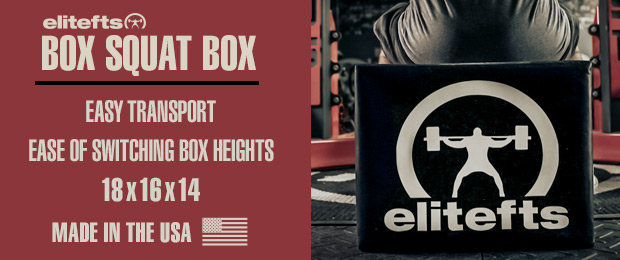
Absolutely.
What are your thoughts of the windmill as a mobility exercise?